Traces of the great fire of 1885 revealed by Old College work
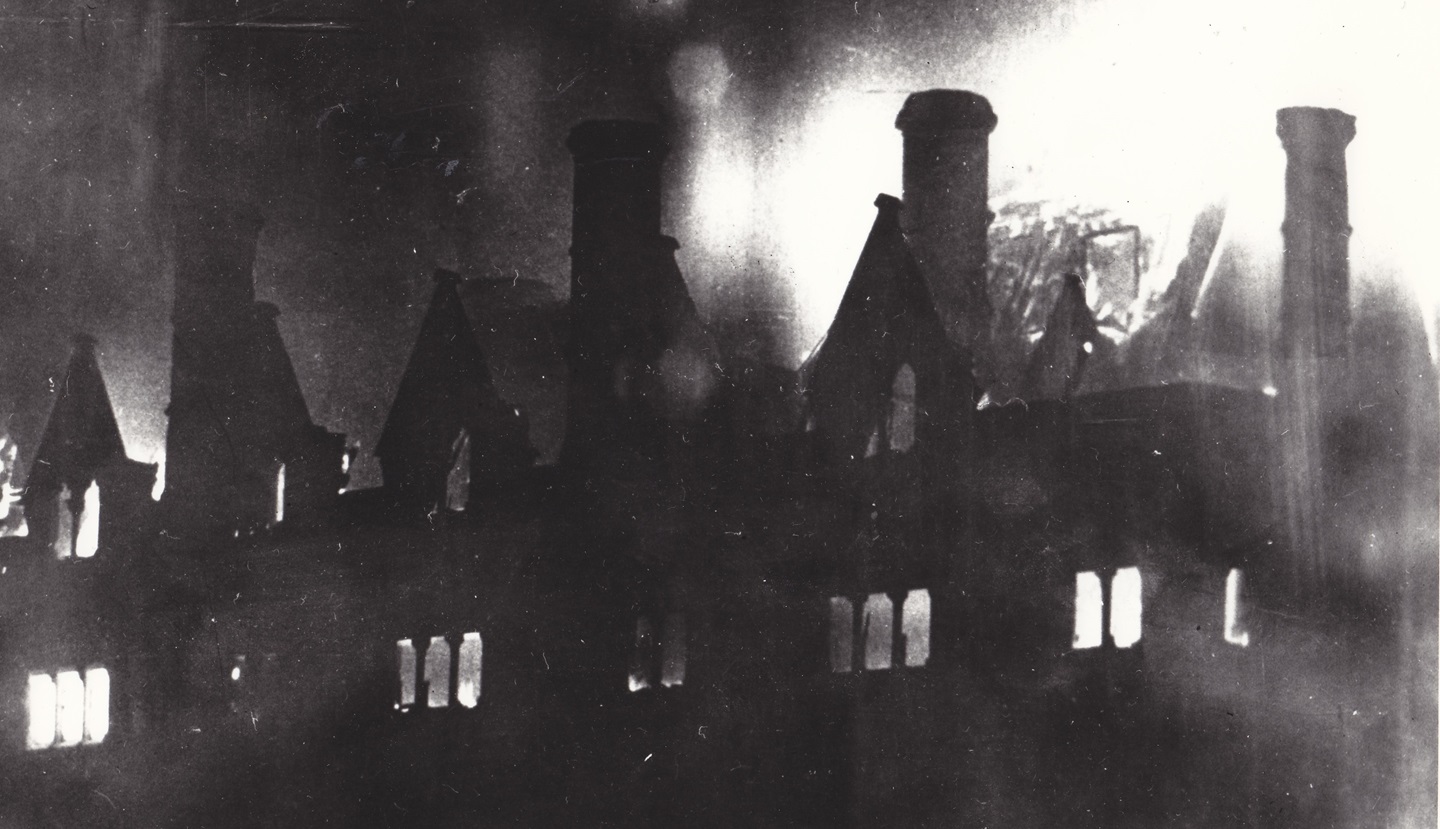
The Old College fire: much of the northern wing of the building was destroyed by the fire on the night of 8/9 July 1885.
05 April 2024
Remnants of the great fire that destroyed much of Aberystwyth University’s Old College have been uncovered as work to restore the Grade 1 listed building gathers pace.
Reportedly caused by “spontaneous combustion amongst the cotton waste used in cleaning up after the chemical experiments in the laboratory department”* located in the roof of the north wing, the fire on the night of 8/9 July 1885 ravaged the building, leaving only Castle House, the Principal’s residence, and the southern wing unscathed.
Much of the reconstruction work was overseen by architect J P Seddon, who had worked on the building for the University as it prepared to welcome its first students in October 1872.
Paid for by £10,000 of insurance money and the proceeds of a fundraising campaign led by the Principal Thomas Charles Edwards, the work led to the construction of the Quad which became the beating heart of the Old College.
-31-WEB2.jpg)
The Old College after the fire.
In the redeveloped Old College the Quad will provide the focus for the Community and Culture zone’s exhibition galleries that will feature curated displays from the University collections and touring exhibitions from major partners, and the UK’s first Centre for Dialogue.
Plans for the restoration of the Quad include the installation of a new floor after surveys revealed the original floor - made of concrete mixed with broken bricks and even coal dust - needed to be strengthened.
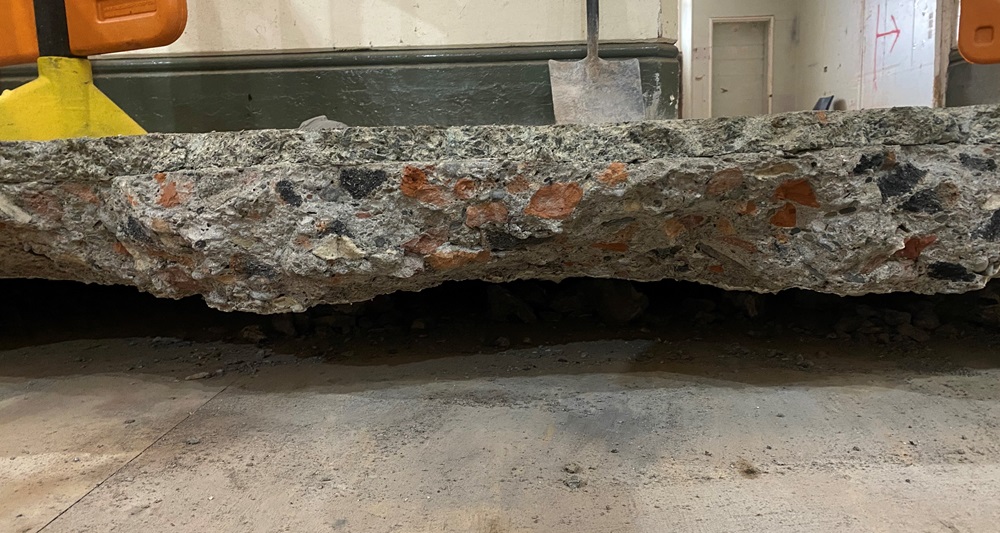
A section of the old Quad floor.
Preparation work has involved clearing areas of the Old College basement and opening up spaces on the King Street side of the building that are believed to have been closed off after the fire.
The work has revealed charred timbers and blackened walls that bear testament to the intensity of the blaze that claimed the lives of three local men during efforts to extinguish the flames and salvage the building and contents.
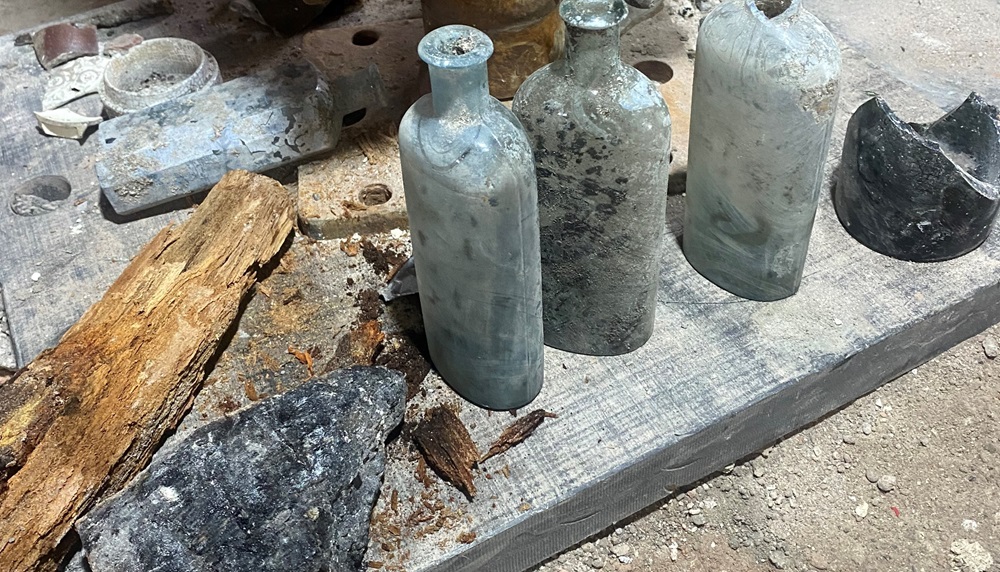
Charred remains and glass retrieved as floor levels are being lowered for the new galleries.
Further signs are visible in the basement celling where the Quad floor was laid directly over rubble from the fire.
The construction team are now coming across more evidence of the fire as they develop the new exhibition galleries that run parallel to the Quad.
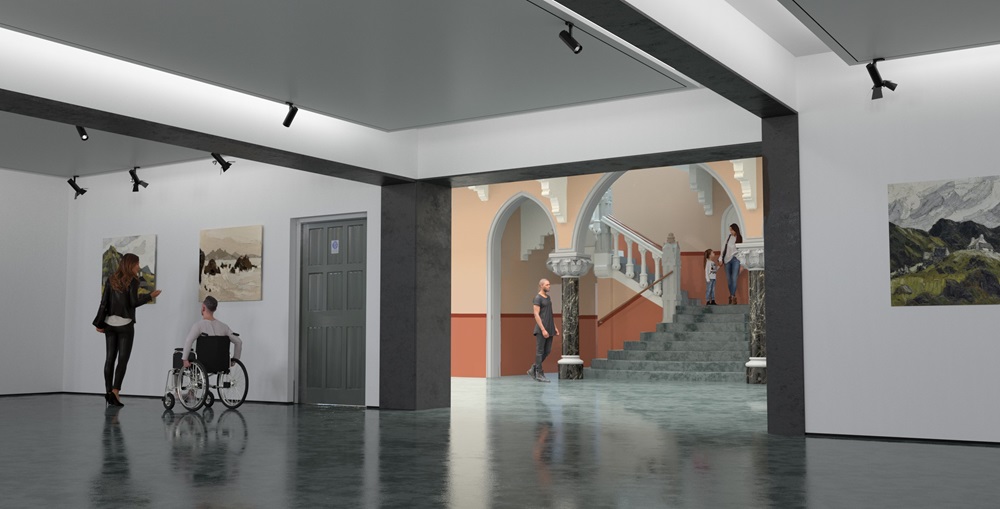
The new galleries will host touring exhibitions from the National Museum of Wales, the National Library and other major UK museums and galleries.
The work involves lowering the current floor levels in rooms running along King Street by around 1 metre.
Initial investigations suggested the team may even find the remains of an old kitchen used during the early days of the University which was buried after the fire.
As well as evidence of the great fire, the work has also revealed what appears to be an early and long-disconnected underfloor heating system.
The work will be overseen by Dyfed Archaeology Trust’s Archaeological Services team who will record items of interest that may be revealed by the excavation.
Jim O’Rourke, Project Manager on the Old College project said: “The Old College is remarkable and it is revealing its own story to us as we work on its redevelopment. Over the years, the building has evolved and been adapted to reflect the needs of students, staff and the wider community, and our role is to continue this process whilst respecting its architectural heritage.
“The fire could well have spelt the end for the University of Wales here in Aberystwyth, but the determination of students, staff with support from people right across Wales meant the rebuilding work could go ahead, though it took many years for the building to be completed. Our discoveries are adding to our understanding of the building and will enrich the stories of the Old College for future generations.”
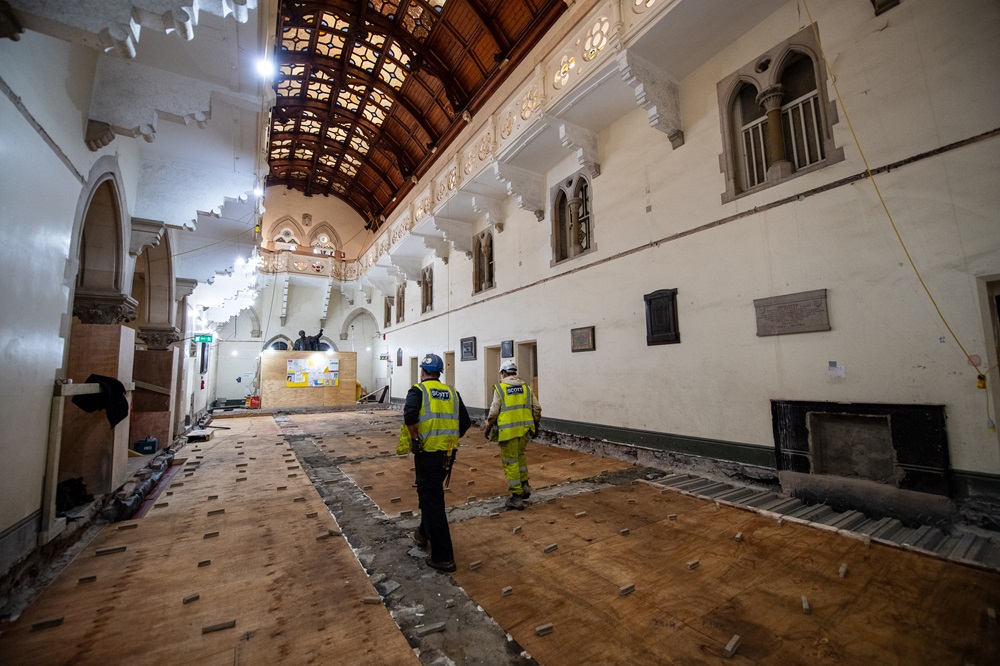
Preparations in place for the new floor to be laid in the Quad. Image: Mark Lewis Photography
At 28.5 centimetres deep, the new steel reinforced Quad floor will be at least 10 centimetres thicker than the old floor and will include a new underfloor heating system.
The Old College project is supported by The National Lottery Heritage Fund, Welsh Government and the European Regional Development Fund, UK Government Levelling Up Fund, Coastal Communities Fund, The National Lottery Community Fund, philanthropic trusts, and individuals.
Once completed it will provide a major new centre for learning, heritage, culture and enterprise in three themed zones: World of Knowledge, Culture and Community, and Enterprise and Innovation.
Inspired by the University’s motto, World of Knowledge will include a centre celebrating pioneering Science and Research, a University Museum, a Young People’s zone with youth-led activities to boost skills, aspirations and wellbeing, a 24-7 student study centre and a cutting-edge cinema facility.
Traditionally the beating heart of the Old College, the Quad will provide the focus for the Community and Culture zone’s exhibition galleries that will feature curated displays from the University collections and touring exhibitions from major partners. This zone also includes the UK’s first Centre for Dialogue.
The Enterprise and Innovation zone will provide 12 Creative Business Units and communal spaces to encourage young entrepreneurs in creative and digital businesses.
Once completed the Old College is expected to attract 200,000 visitors and contribute up to £14.5m annually to the local economy, putting it on par with major tourist destinations such as Caernarfon and Conwy castles.
Up to 130 jobs will be created directly and indirectly and there will also be more than 400 volunteering opportunities. There will be 4* hotel accommodation, bars, cafes and spaces for activities and events across 7 floors and 143 rooms, including a dramatic function room for 200 people with spectacular views across Cardigan Bay.
Phase 1, which involves the Old College itself and the Georgian villas (1 & 2 Marine Terrace), is expected to be completed around the end of 2025.
Phase 2, The Cambria, is expected to be completed by late 2026.
*This was the finding of Colonel Sir Charles Firth, President of the Fire Brigade Association, London, who investigated the cause of the fire. His findings were published in The Cambrian News and Meirionethshire Standard on 17 July 1885.



